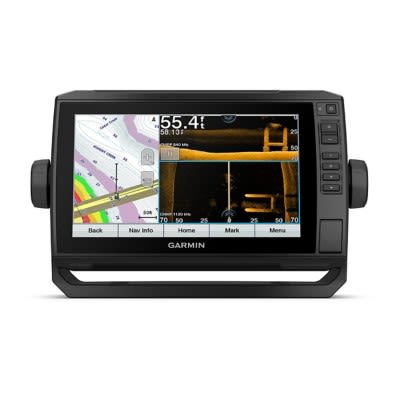Today's Best Fishing Times
Get the best fishing times for Indian Lake with Lake-Link's Fishing Forecast. SEE MORE
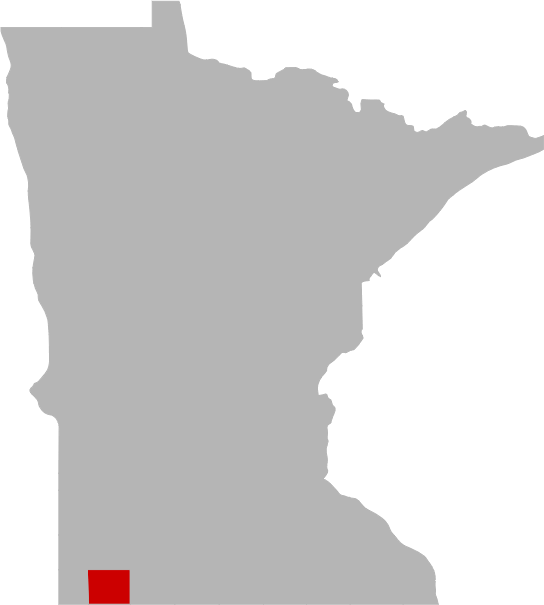

Share Your Catch & Win!
Frequently Asked Questions About Indian Lake, MN
- How big is Indian Lake?
- How deep is Indian Lake?
- What kind of fish can you catch in Indian Lake?
- Are there places to stay in the Indian Lake area?
- Are there boat launches on Indian Lake?
- Are there places to eat and drink near Indian Lake?
- What is the average air temp for Indian Lake?
- Are there any state parks near Indian Lake?
How big is Indian Lake?
How deep is Indian Lake?
What kind of fish can you catch in Indian Lake?
Other fish species in the lake include Fathead Minnow, Freshwater Drum, Green Sunfish, Orangespotted Sunfish, Quillback, Spotfin Shiner, Tadpole Madtom and White Sucker.
Are there places to stay in the Indian Lake area?
More Lodging Options
Are there boat launches on Indian Lake?
Are there places to eat and drink near Indian Lake?
Explore the Indian Lake area in a RV
Are you looking for an adventurous vacation option that won't break the bank? Look no further than renting an RV! Contrary to popular belief, the process is much simpler than you might imagine. With just a few easy steps, you'll soon be experiencing the ultimate freedom and convenience of exploring the open road in your very own recreational vehicle. And the best part? RV travel can save you up to 60% compared to other types of vacations! With the money you'll save, you'll be able to travel even more and create unforgettable memories along the way. So why wait? Start planning your next adventure today with an RV rental. Learn more about renting a RV.
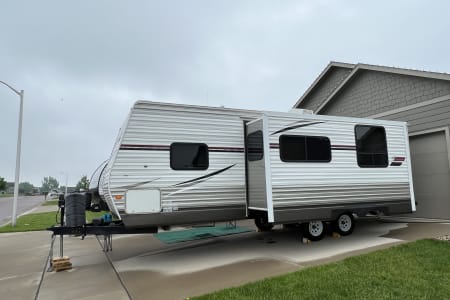

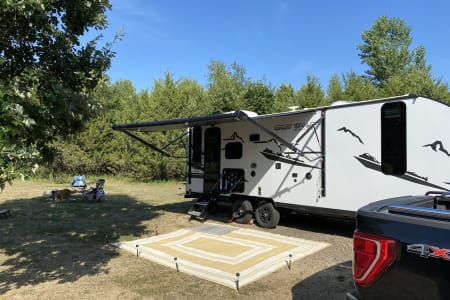
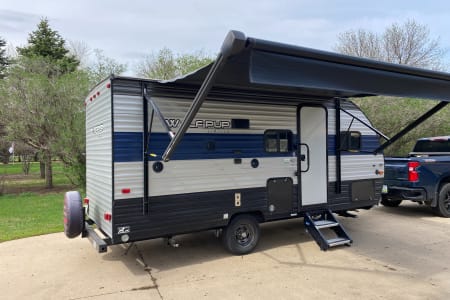
What aquatic invasive species are found in Indian Lake?
Join us in the fight to prevent the spread of invasive species These sneaky creatures can hitch a ride on boats, clinging onto propellers, anchor lines, and trailers. They can even survive in hidden places like bilge water and ballast tanks, or disguise themselves in dirt and sand that sticks to nets, buckets, anchors, and waders. But don't worry, we have the power to stop them in their tracks with just a few simple steps. So let's do our part and protect our waters from these unwanted invaders.
History & Status of the Fishery
INTRODUCTION
Indian Lake is a 204-acre lake located two miles to the southwest of the City of Round Lake in Nobles County. Indian Lake has a maximum depth of 6.0 ft. and a watershed to lake ratio of 38:1 which means that for every 1 acre of water on the lake there is 38 acres of upland drainage. Indian Lake has a relatively large watershed. Runoff from surrounding agricultural fields has resulted in poor water quality in Indian Lake, as indicated by a Secchi depth of 1.9 feet. Despite its shallowness, Indian Lake rarely experiences low dissolved oxygen levels in the winter which has allowed a diverse fish community to establish. Indian Lake is managed primarily for black and white crappie, and secondarily for walleye and northern pike. The crappie populations have sustained themselves through natural reproduction, but walleye and northern pike are stocked to maintain populations. Walleye fingerlings are stocked every other year (2009, 2011, 2013, and 2015) and northern pike fingerlings are stocked every third year (2005, 2008, 2011, 2014, and 2017). A population assessment was conducted during the week of June 2, 2014 to monitor the fish community in Indian Lake.
WHITE CRAPPIE
Over the past decade, the white crappie population has been stable, as variation in catch rates has been minimal (25.1 per trap net in 2004, 22.9 per trap net in 2010, and 18.1 per trap net in 2014). Prior to 2004, catch rates were highly variable ranging from 5.5 per trap net in 1996 to 107.4 per trap net in 2000. The catch rate of 18.1 per trap net in 2014 is much greater than what would be expected in lakes similar to Indian. The majority (74 percent) of the white crappie sampled were from 9.0 to 10.5 inches in length. Overall, lengths ranged from 4.1 to 15.0 inches and averaged 9.6 inches. White crappies were plump, indicating that prey is readily available. Indian Lake has the potential to produce large white crappies, as evidenced by the sampling of 9 fish over 12 inches, with one of those being 15 inches.
BLACK CRAPPIE
Black crappie abundance has been highly variable in Indian Lake, ranging from 0.4 per trap net in 2014 to 19.3 per trap net in 2000. The 2014 catch rate of 0.4 per trap net is well below the long term average of 9.0 per trap net, and is below what would be expected in similar lakes. The low abundance of black crappies in Indian Lake may be a result of the high abundance of white crappies. The two species of crappies can coexist, but one of the species usually will occur at a lower abundance. The three black crappies that were captured in trap nets were large, ranging in length from 12.8 to 13.5 inches and averaging 13.3 inches. The gill net catch of black crappie indicated the presence of additional year classes, as gill netted crappies ranged from 4.4 to 9.7 inches and averaged 6.8 inches. Crappies were plump indicating that prey is readily available. Black crappies are present at low numbers in this system, but the angler can expect the size of black crappies to be large.
WALLEYE
In 2014, walleyes were captured at rate of 2.7 per gill net, which is within the historic range of catch rates (1.7 per gill net in 2010 to 17.7 per gill net in 2010) , and within the expected range of catch rates for similar lakes (2.3 to 18.1 per gill net). The 2014 catch rate is at the low end of expected catch rates, indicating a low abundance population. Walleyes from gill nets ranged in length from 10.1 to 21.1 inches and averaged 16.3 inches. Walleyes captured in trap nets were smaller, ranging from 6.9 to 8.5 inches and averaging 7.5 inches. Three year classes of walleyes were sampled (age-1, age-3, and age-5), all corresponding to years that fingerlings were stocked (2013, 2011, and 2009). This indicates that natural reproduction is rare in Indian Lake and that the walleye population is maintained by stocking. Mean back-calculated lengths at age were 8.2 inches for age-1, 13.2 inches for age-2, 15.4 inches for age-3, 17.9 inches for age-4, and 19.3 inches for age-5, indicating slow growth for ages 1 to 3 and faster growth for ages 4 and 5, when compared to average values of mean length at age for similar lakes. Walleyes sampled corresponded to each stocking event, suggesting that fingerling stocking is somewhat successful in keeping multiple year classes present in this system. The current stocking regime will likely continue, as strong year classes that have occurred in the past have been the result of fingerling stocking. In addition, walleye fingerling stocking is the most successful strategy when an abundant crappie population is present.
NORTHERN PIKE
Stocking of northern pike fingerlings has occurred every three years since 2005 in Indian Lake (2005, 2008, 2011 and 2014). Despite stocking efforts, zero northern pike were captured in 2014, which is the lowest catch rate observed since surveys began on Indian Lake in 1987. Prior to the beginning of stocking in 2005, northern pike catch rates were higher at 4.5, 6.0, 2.7, and 3.3 per gill net in 1987, 1996, 2000, and 2004, respectively. The higher catch rates prior to stocking suggest that higher quality spawning habitat was available. Northern pike likely made spawning runs into streams and ditches that had good spawning habitat and were connected to Indian Lake. The northern pike fingerlings that are being stocked once every three years are not showing up in the catches; therefore, consideration will be given to the altering the frequency and/or the size of northern pike stocked.
YELLOW PERCH
The 2014 catch rate of 5.0 per gill net is within the expected range of catch rates of similar lakes, but is the lowest catch rate observed since surveys began in 1987. Yellow perch catch rates have varied from 36.5 per gill net in 1987 to 5.0 per gill net in 2014, and have averaged 14.7 per gill net since 1987. Yellow perch ranged in length from 7.6 to 10.9 inches and averaged 9.2 inches. In an effort to increase the brood stock of yellow perch in Indian Lake, 750 pre-spawn adult yellow perch were stocked in April of 2014.
OTHER SPECIES
Over the last decade, black bullhead catch rates have been below the expected catch rates for similar lakes. In 2014, the trend of low black bullhead abundance continued as bullheads were captured at a rate of 2.8 per trap net. Black bullheads ranged in length from 10.0 to 13.5 inches and averaged 11.6 inches.
Common carp abundance increased from 1.0 per gill net in 2010 to 3.3 per gill net in 2014, which is the second highest catch rate of common carp since surveys began in 1987. The 2014 catch rate is higher than the long term average of 2.4 per gill net, but within the expected range of catch rates for similar lakes (1.0 to 13.8 per gill net). Common carp lengths in trap nets and gill nets ranged from 8.6 to 35.9 inches, with most of them being greater than 25.0 inches in length.
The 2014 catch rate of bigmouth buffalo (3.3 per gill net) was the highest catch rate observed since surveys began in 1987, but was within the expected range of catch rates for similar lakes (0.8 to 7.0 per gill net). Bigmouth buffalo ranged in length from 7.7 to 27.6 inches and averaged 20.5 inches.
Freshwater drum were first sampled in Indian Lake in the 1996 survey. Since then, the abundance of freshwater drum has consistently stayed within the expected range of catch rates for both trap nets (0.2 to 3.3 per trap net) and gill nets (0.5 to 8.3 per trap net) for similar lakes. The 2014 catch rates were also within this range at 5.7 per gill net and 0.4 per trap net. Freshwater drum can be problematic because they can predate on game fish, or compete with game fish for prey resources.
One, 25.2 inch channel catfish was sampled in the gill net. This is the first time a channel catfish has been sampled since 2000.
Other species sampled included white sucker (N=26).
Plants in the water and at the water's edge provide habitat, prevent erosion, and absorb excess nutrients. Shrubs, trees, and woody debris such as fallen trees or limbs provide good habitat both above and below the water and should be left in place. By leaving a buffer strip of natural vegetation along the shoreline, property owners can reduce erosion, help maintain or improve water quality, and provide habitat and travel corridors for wildlife.
Best management practices within the watershed (no-till farming, cover crops, buffer strips, targeted fertilizer application, reduced or metered tiling) would help reduce nutrients entering the lake. High nutrient and sediment input can cause algae blooms and reduce overall water quality. Any improvements in the watershed are likely to have positive impacts on the fishery.
Prepared by Jonah Dagel
What is the average air temp for Indian Lake?
Are there any state parks near Indian Lake?
For more Minnesota State Park information see our State Park Guide.
Indian Lake Reviews
Below is the word on street about Indian Lake.Have you been to Indian Lake? Why not share your personal reveiw with others?
Submit Review
jared s.

More Nearby Lakes To Explore
There's more lake's to explore around Indian Lake...| DISTANCE | ACRES | MAX DEPTH | |
| Round Lake | 4.7 mi | 930 | 9 ft |
| Bella Lake | 5.9 mi | 180 | 14 ft |
| Ocheda Lake | 6.1 mi | 1,691 | 5 ft |
| Ocheyedan Pit #1 | 8.8 mi | 10 | 17 ft |
| Silver Lake | 9.0 mi | 1,041 | 10 ft |
| Okabena Lake | 9.1 mi | 776 | 16 ft |
| Diamond Lake | 15.8 mi | 143 | 7 ft |
| Marble Lake | 18.6 mi | 173 | 7 ft |
| Rush Lake | 18.7 mi | 243 | 3 ft |
| Little Spirit Lake | 18.8 mi | 604 | 7 ft |


 (1)
(1)

